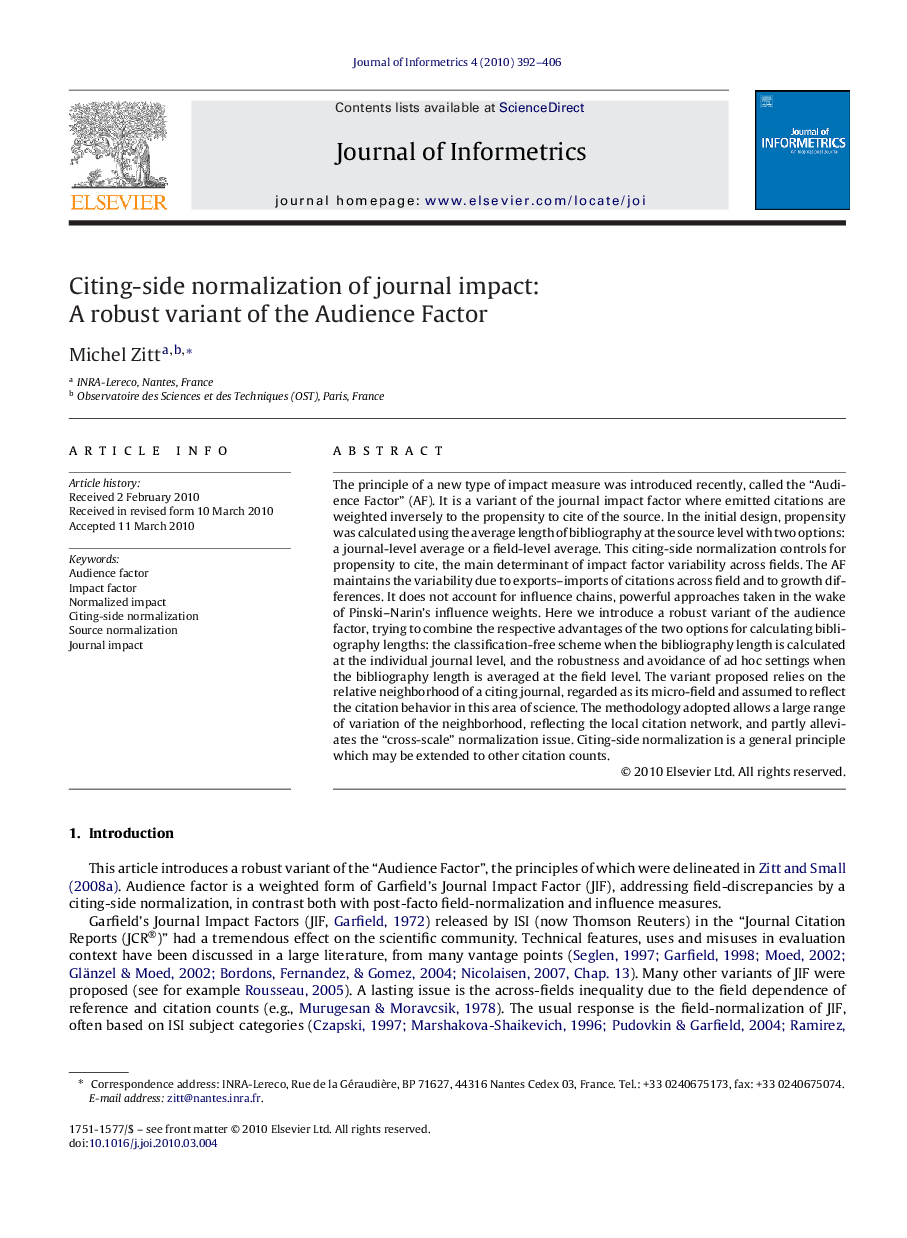| Article ID | Journal | Published Year | Pages | File Type |
|---|---|---|---|---|
| 524106 | Journal of Informetrics | 2010 | 15 Pages |
The principle of a new type of impact measure was introduced recently, called the “Audience Factor” (AF). It is a variant of the journal impact factor where emitted citations are weighted inversely to the propensity to cite of the source. In the initial design, propensity was calculated using the average length of bibliography at the source level with two options: a journal-level average or a field-level average. This citing-side normalization controls for propensity to cite, the main determinant of impact factor variability across fields. The AF maintains the variability due to exports–imports of citations across field and to growth differences. It does not account for influence chains, powerful approaches taken in the wake of Pinski–Narin's influence weights. Here we introduce a robust variant of the audience factor, trying to combine the respective advantages of the two options for calculating bibliography lengths: the classification-free scheme when the bibliography length is calculated at the individual journal level, and the robustness and avoidance of ad hoc settings when the bibliography length is averaged at the field level. The variant proposed relies on the relative neighborhood of a citing journal, regarded as its micro-field and assumed to reflect the citation behavior in this area of science. The methodology adopted allows a large range of variation of the neighborhood, reflecting the local citation network, and partly alleviates the “cross-scale” normalization issue. Citing-side normalization is a general principle which may be extended to other citation counts.
